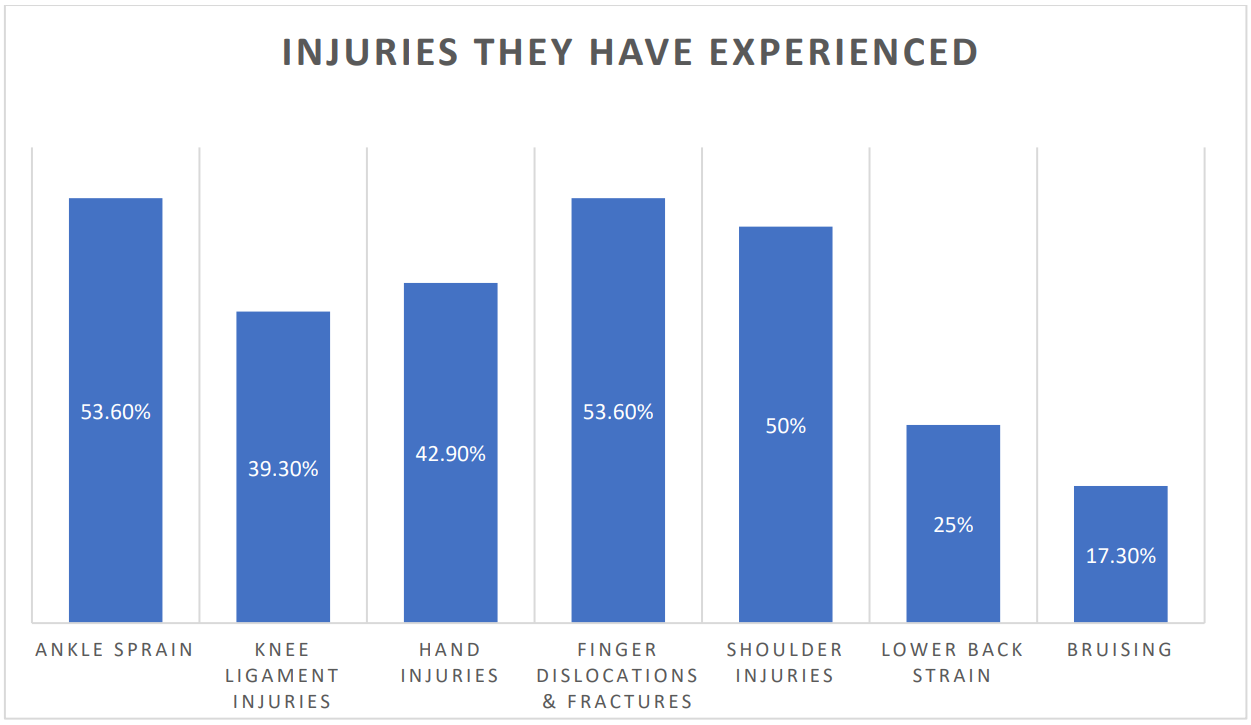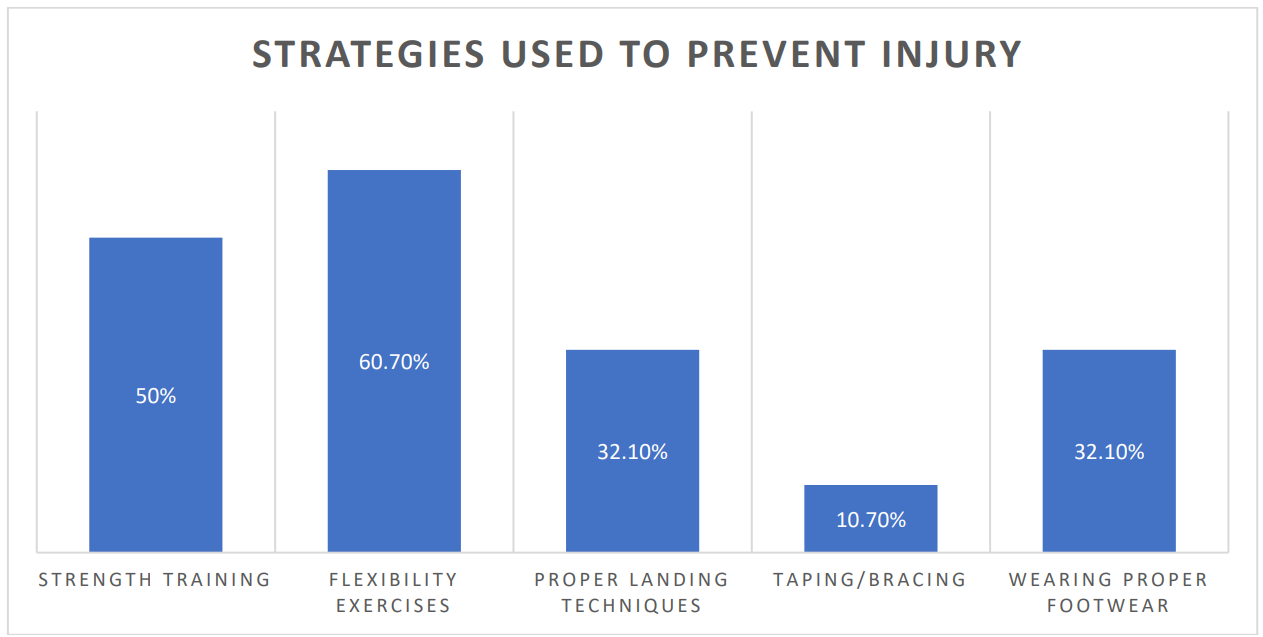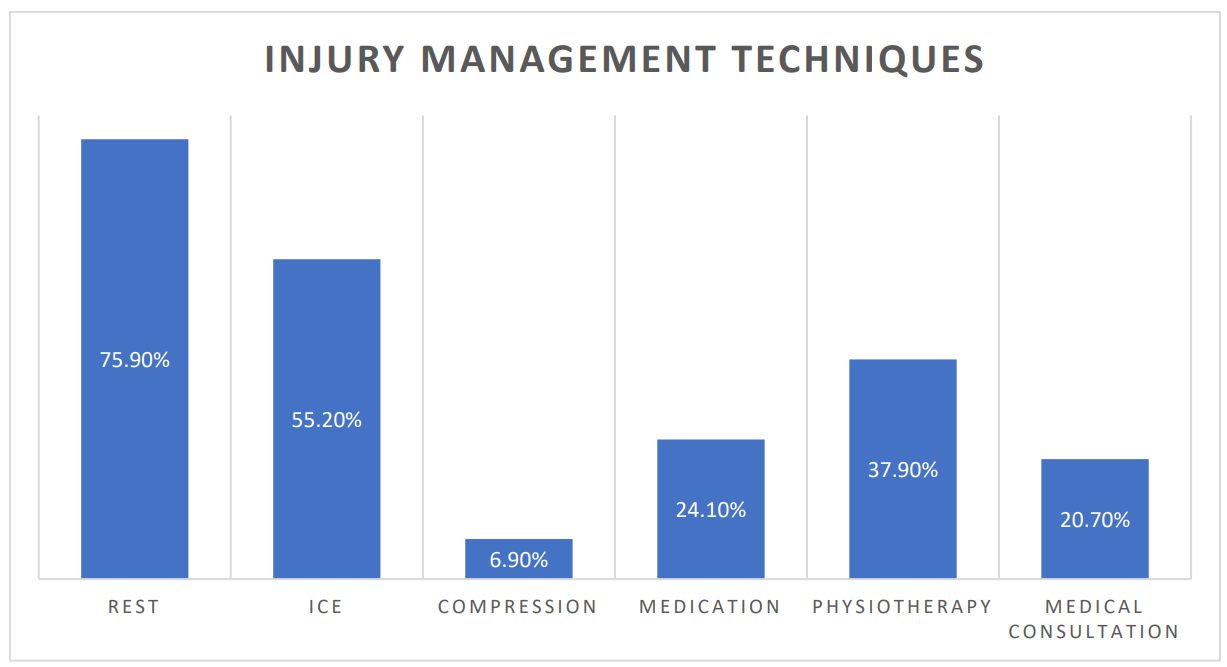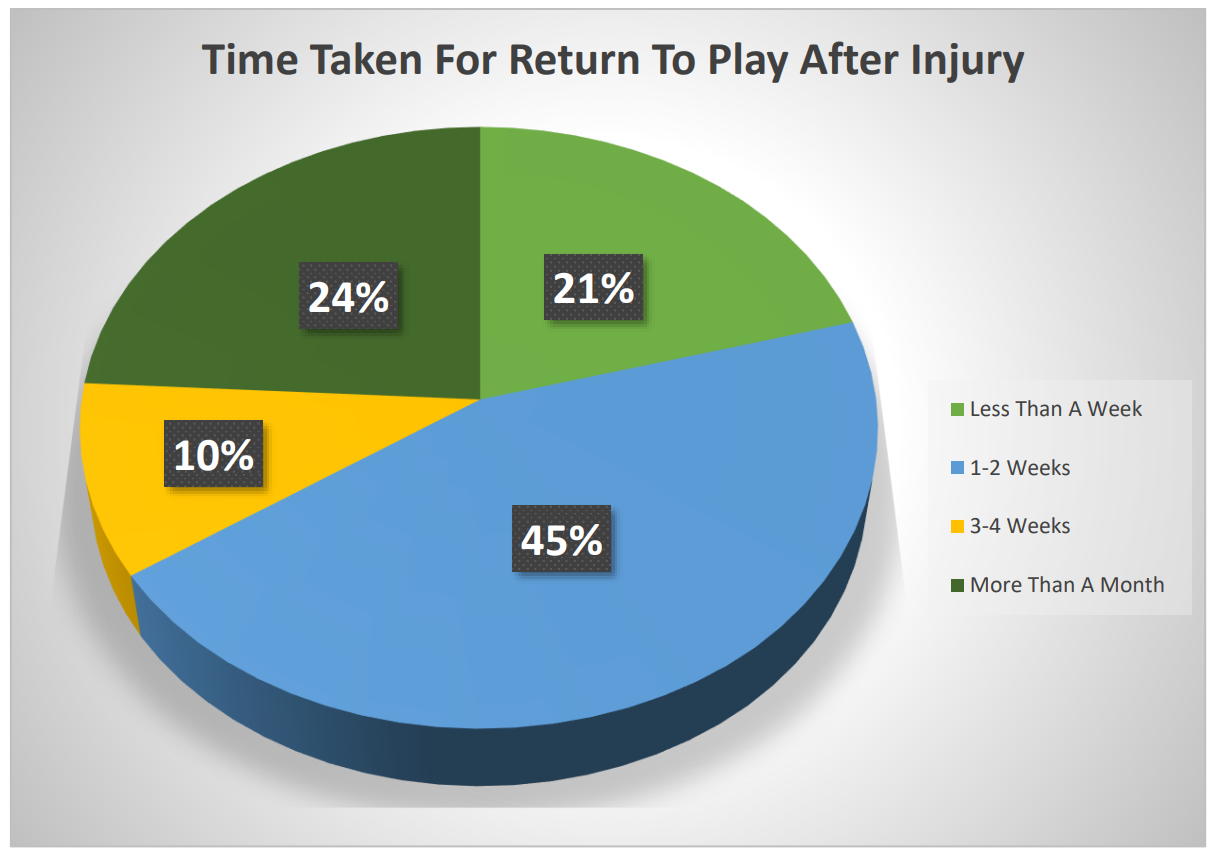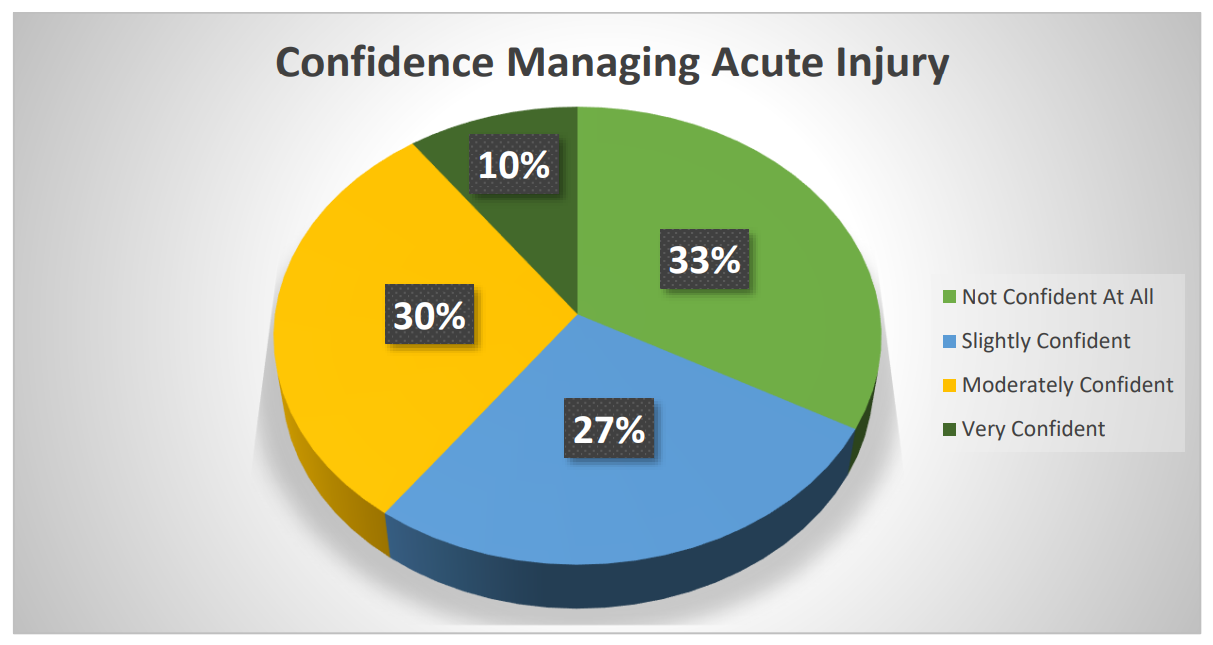Table 5: Percentage of female volleyball Players confidence level in managing acute injury
The study aims to determine the percentage of female volleyball players who are confident in managing acute injuries. This pie chart shows that the ability of mental power is very confident (10%), moderately confident (30%), slightly confident (27%), and not confident at all (33%).
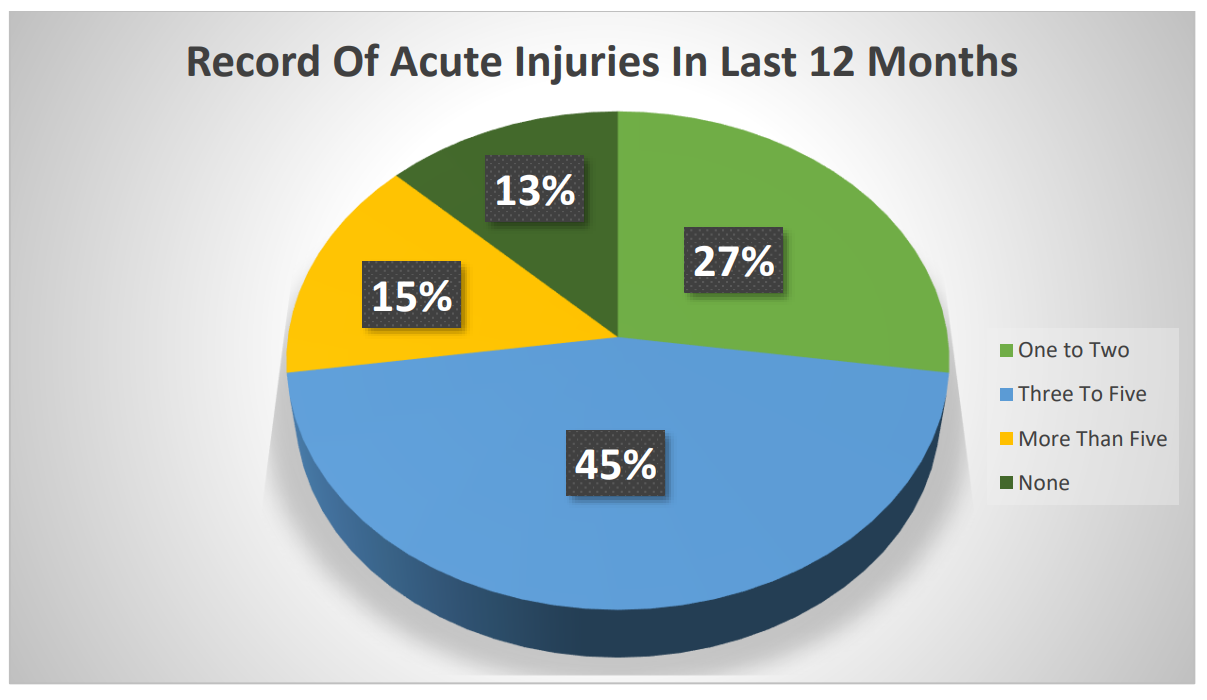
Table 6: Percentage of acute injuries among female volleyball players over last 12 months.
This study presents the injuries sustained by volleyball players. In the past 12 months, the incidence of injuries recorded is as follows: more than 5 times (4%), 1-2 times (50%), 3-5 times (16%), and none (30%).
The study's findings provide a valuable fresh viewpoint on the severity, incidence, and locations of injuries among varsity-level female volleyball players. The study's findings provide valuable insights into the temperament, frequency, and locations of injuries among female varsity volleyball players. The current study indicates that the primary cause of impairment and subpar performance among university-level competitive volleyball players is likely the prevalence of injuries, especially to the shoulder, ankle, and fingers.
Findings & Discussion :
Volleyball requires a lot of repetitive motions, sophisticated strategies, and excellent motor skills to spike, block, serve, receive, pass, and toss. A number of potential injuries are covered by the dynamic interaction. The knee joint was the most frequently injured site in this investigation, accounting for 43 out of 166 cases (25.9%) (Yang
et al. 2016). The purpose of this study was to describe the current state of KM treatment for sports injuries. A questionnaire was used to gather feedback from different female volleyball players in Bangladesh. The survey was designed similarly to those used in earlier studies on sports injuries (Julian, Hoskins, and Vitiello 2010) and (Augustsson et al. 2006).
Injuries they have experienced percentage rate are ankle sprain (53.60%), knee ligament injuries (39.30%), hand injuries (42.90%), finger dislocations & fractions (53.60%), shoulder injuries (50%), lower back strain (25%), and bruising (17.30%). These results agree with
former studies that described common injuries site including ankle sprain, knee, finger and lower back.
This study reports the use of various strategies to prevent the rise in injuries. Strategies are strength training (50%), flexibility exercise (60.70%), proper landing techniques (32.10%), bracing (10.70%), and wearing proper footwear (32.10%) in this research.
However, the doctor's assistance can guide the treatment method. The way injury would be managed is rest (75.90%), ice (55.20%), compression (6.90%), medication (24.10%),
physiotherapy (37.90%), medical consultation (20.70%)
Injury and treatment metrics could be important in developing an upgraded knowledge management strategy in sports medicine. This research indicates that recovery time is less than a week (21%), one to two weeks (45%), three to four weeks (10%), and more than a month (24%). The crucial part for acute injury is increasing the confidence level of players to overcome it as soon as possible. This case study defines the rate of not confident at all (33%), slightly confident (27%), moderately confident (30%), and very confident (10%). This research shows that their confidence level is low for overcoming injury. According to this case study, in the last 12 months, the highest number of acute injuries is three to five times (45%).
Finally, this research study defines the trend of acute injuries among female volleyball players and depends on first-aid treatment. Various factors can affect the occurrence of an injury. Intrinsic factors include age, gender, core instability, and


 ©
© 